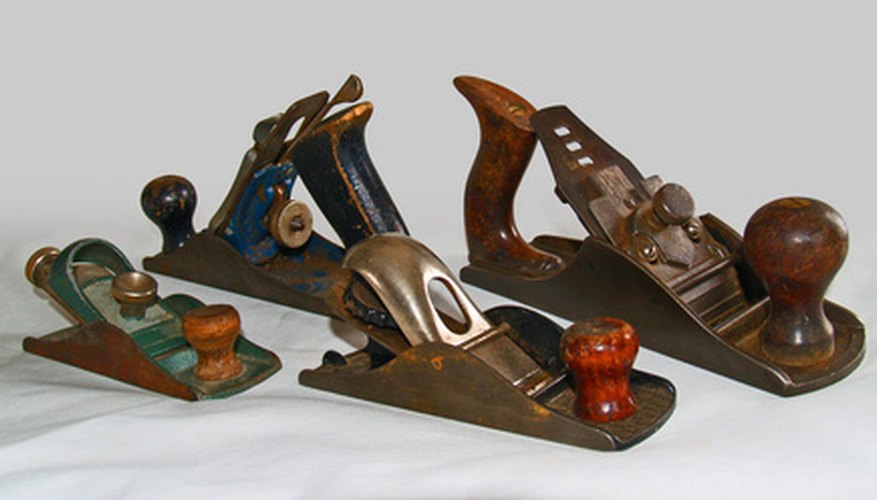Stanley has been creating tools such as the bench plane since 1843, and it can be difficult to date an antique tool if you don't know where to look, according to the Stanley Company. There are twenty types of Stanley planes dating back to 1867. Each type has subtle differences that distinguish it from the other types, such as variations in parts and different marks cast into the metal like the plane size number or patent numbers or dates.
Familiarise yourself with the names of the various parts of the tool using a Stanley diagram (see Reference 3). Locate the bed of the plane behind the frog. Note whether you see any patent dates cast into the bed and if so, how many.
Examine the plane to see if there is a raised ring meant to be a receiver for the knob cast into the bed. If you noted one patent date and no raised ring, your plane is Type 13 and dates between 1925 and 1928. If you noted one patent date and there is a raised ring, your plane is Type 14 and dates between 1929 and 1930. If you noted zero patent dates and there is a raised ring, you have a plane of Type 15 to 20. If you noted zero patent dates and there is no raised ring, you have a plane Type 1 to 8.
- Stanley has been creating tools such as the bench plane since 1843, and it can be difficult to date an antique tool if you don't know where to look, according to the Stanley Company.
- If you noted one patent date and there is a raised ring, your plane is Type 14 and dates between 1929 and 1930.
Note the colour of the plane. If you have Type 15 to 20, and it is painted blue, then your plane has been narrowed down to Type 20 and dates between 1962 and 1967.
Determine if the plane has a raised, broad, and flat rib casting at the toe and heel. If so, it has been narrowed down to Types 16 through 19. If not, your plane is Type 15 and dates between 1931 and 1932.
- Note the colour of the plane.
- If not, your plane is Type 15 and dates between 1931 and 1932.
Observe whether the word "STANLEY" is printed on the lateral adjustment lever in a vertical script. If so, your plane is a Type 19 and dates between 1949 and 1961.
Find the depth-adjustment nut, and note whether it has a diagonal knurling pattern on the outside of it or not. If so, your plane is Type 18 and dates between 1946 and 1947.
Determine if your plane has any "wartime features" such as a handle or knob with red or black paint or stain or a steel or hard rubber depth-adjustment nut. If so, you have a Type 17 plane that dates between 1942 and 1945. If not, you have a Type 16 plane that dates between 1933 and 1941.
- Find the depth-adjustment nut, and note whether it has a diagonal knurling pattern on the outside of it or not.
- If not, you have a Type 16 plane that dates between 1933 and 1941.
Notice if the frog rib of the plane is enlarged and arched and if it had two patent dates cast in the bed. If so, you have a Type 10 plane that dates between 1907 and 1909. If not, your plane is a Type 9 and dates between 1902 and 1907.
Measure the depth-adjustment nut to see if it is as large as 1-1/4 inch in diameter. If it is and it had three dates cast into the bed, your plane is a Type 12 and dates between 1919 and 1924. If not, your plane is a Type 11 and dates between 1910 and 1918.
